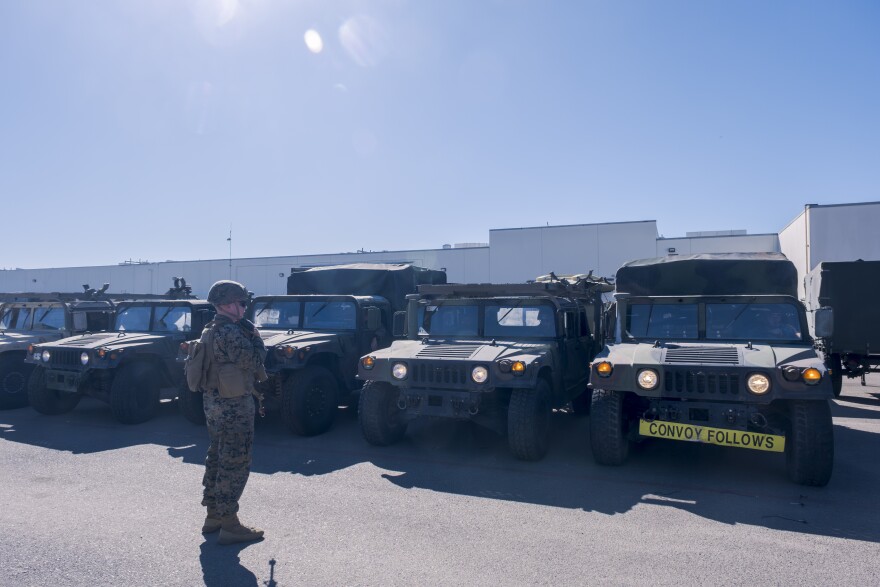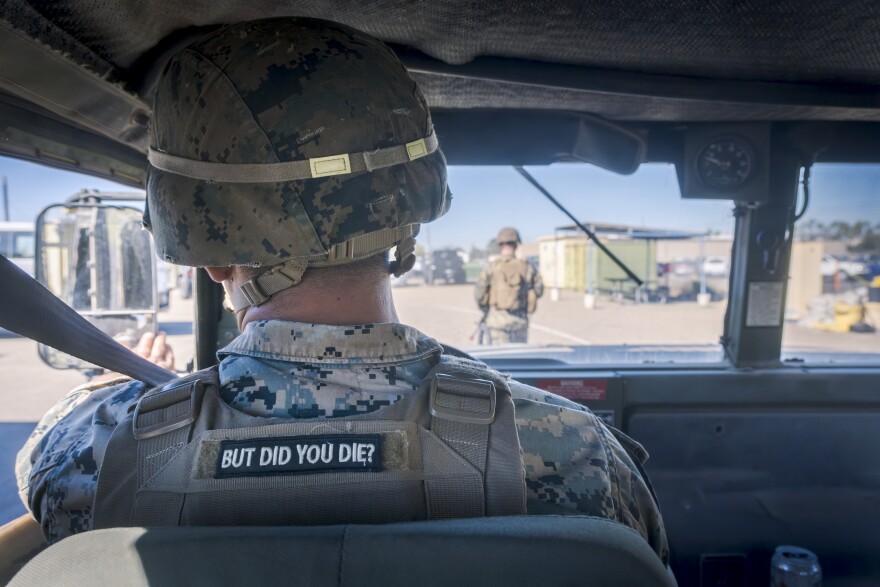It was a warm October morning in San Diego and the headquarters of Wing Communication Squadron 38 was abuzz. Marine officers stood around a conference room table chatting about the day's plans. Most of the squadron's Marines, who had been up for hours, sat behind the building with their stuffed packs in rows looking at their phones, drinking energy drinks and joking around.
But the squadron wasn't preparing to deploy across the Pacific or to the Middle East — instead, they were preparing to convoy across Interstate 15 (I-15) to the urban wilderness of eastern Miramar, where they'll spend the next 10 days in the field.
The Marines invited KPBS to ride along with the convoy for the day to see just what field operations in the middle of San Diego are like.
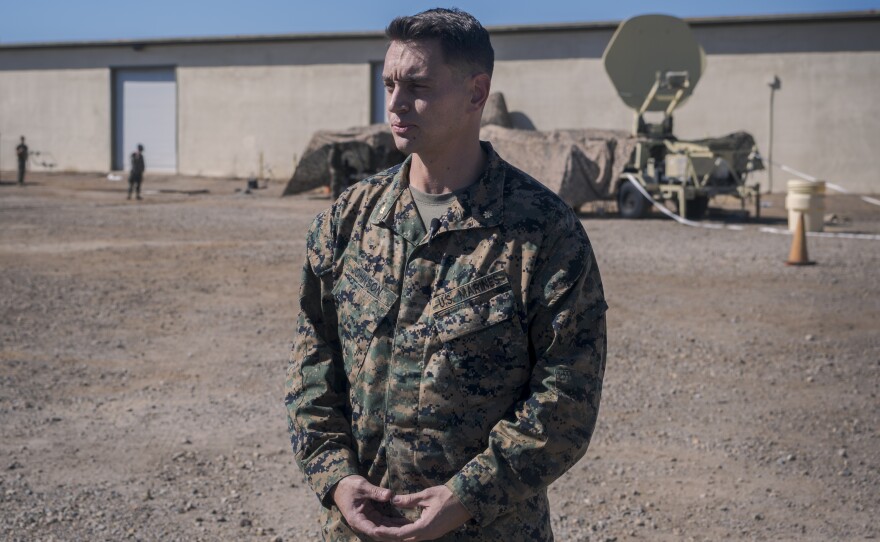
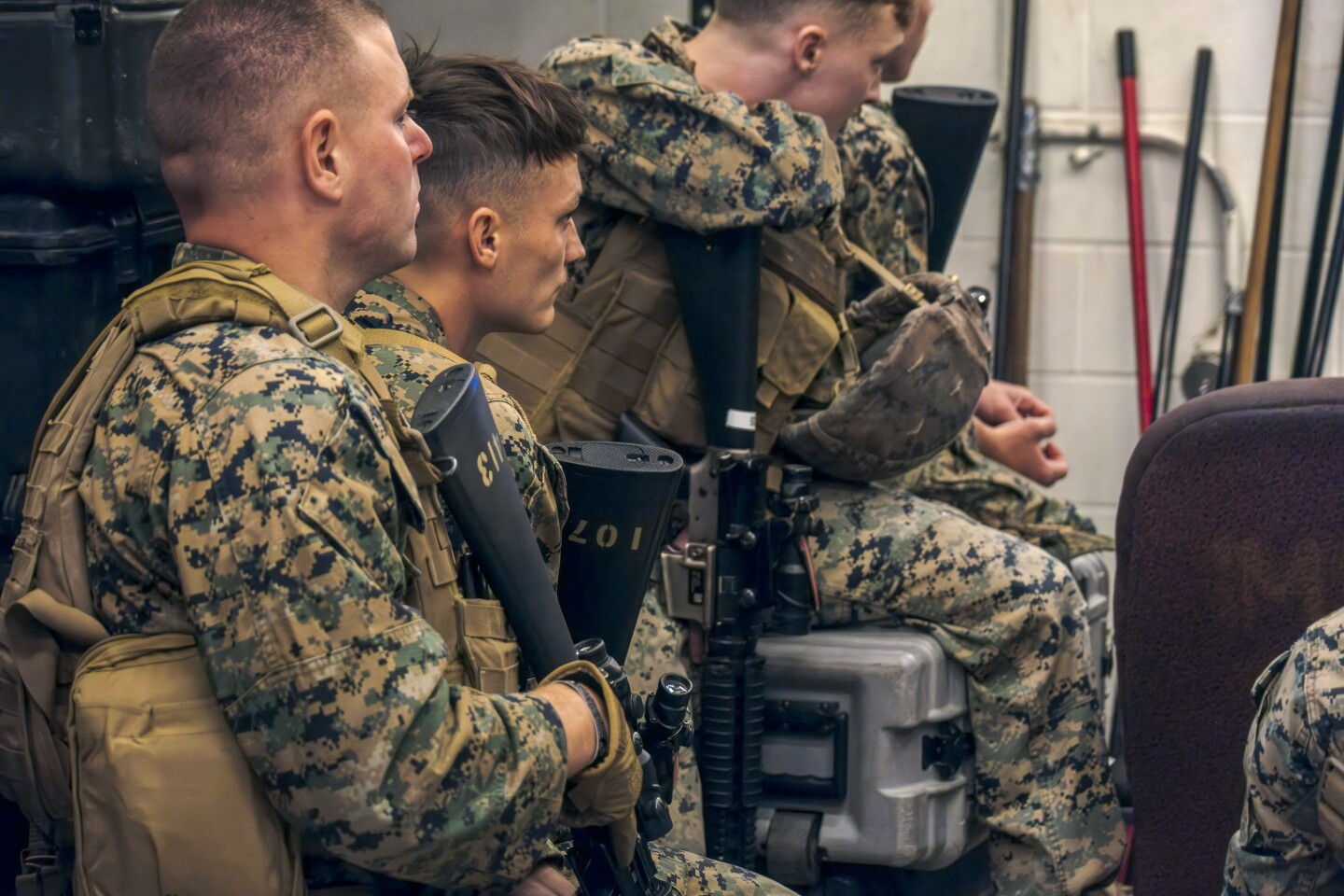
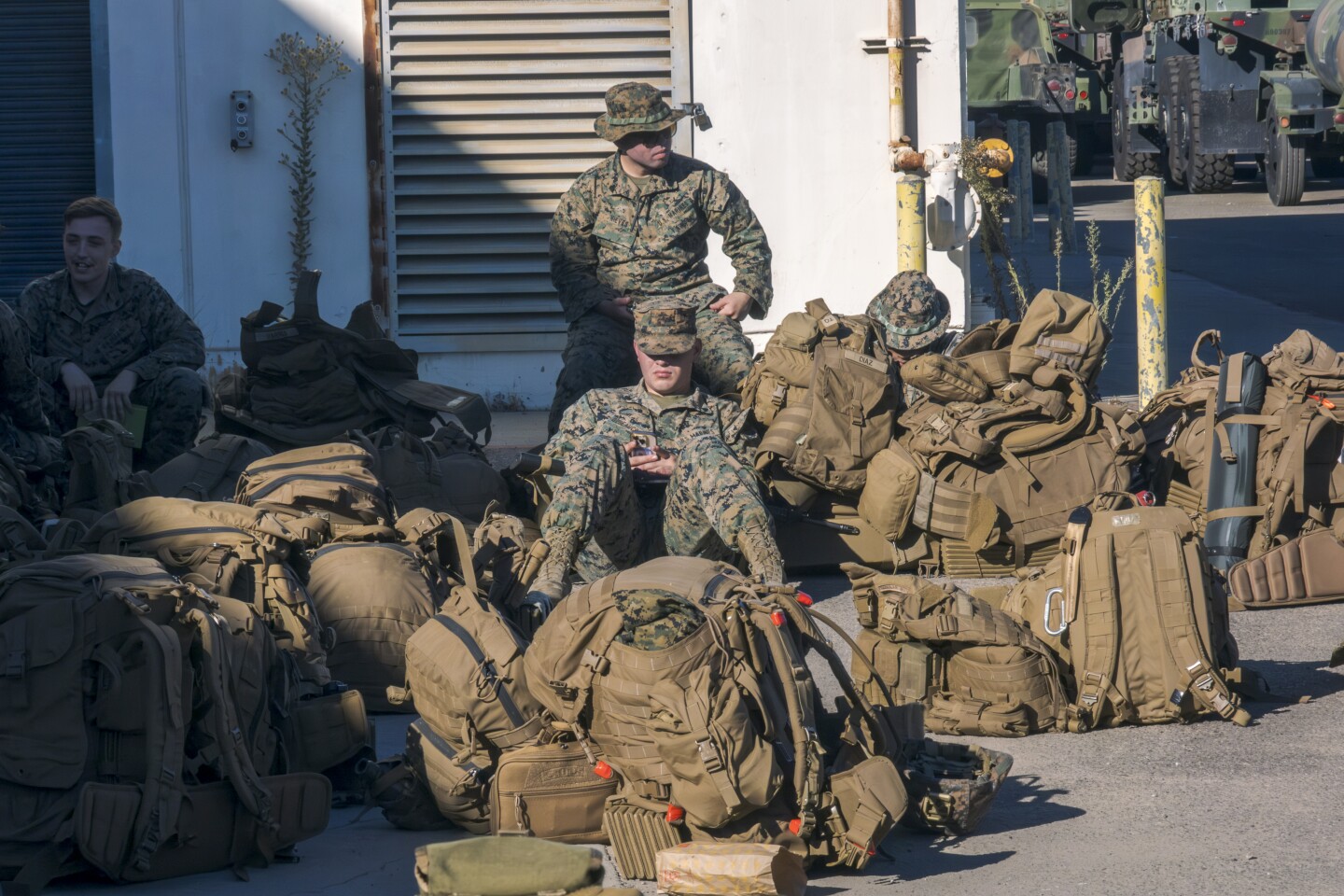
"Being a ground-based unit within the Marine Aircraft Wing, we don't fly aircraft," said Maj. Anthony Johnson, the squadron operations officer. "That training area provides us the ability right in our backyard to go and train."
Marine Corps Air Station Miramar spans about 23,000 acres. Most of the base's infrastructure — including its tarmac, hangars, housing — and its people are on the western part of the base. But 15,000 of those acres — about 65% of the base — is east of I-15, and largely undeveloped.
The Marines loaded into Humvees and 7-ton trucks and made their way past the airfield. After a 15-minute delay waiting for base police to unlock a gate, the convoy rolled under Kearny Villa road then over I-15.
There's not much going on here today, but 70 years ago, this was the center of activity on the base.
Camp Kearny was established here by the Army to train soldiers during World War I. This was no small outpost — Camp Kearny was designed to accommodate 30,000 people. It closed after the war, and in 1931 the Navy acquired it to use as an auxiliary dirigible base.
In World War II, the Marines established Camp Elliot centered on what today is the intersection of State Hwy 163 and I-15. Tens of thousands of Marines who fought in the Pacific trained at the camp. It was also the home of the original Navajo Code Talkers.
The ruins of the camp are visible today between I-15 and Kearny Villa Rd. and primarily just east of the interstate. The San Diego County Sheriff's Department has a training facility there, as does San Diego Fire-Rescue.
Just above those ruins the convoy halted to establish its base camp just a few hundred yards from bustling I-15.
Getting into the field is important for the squadron, said 1st. Lt. Sophie Svoboda.
"At the end of the day, when we do go into conflict, it's going to be important that ... the Marines are familiar with being out in this type of terrain," said Svoboda, who led the day's convoy. "(And) just being out in the elements in general."
Lightening Strike 25 was a test of the squadron's readiness to deploy into combat. In the field these Marines would need to secure zones to establish what the Marines call "communications nodes." Essentially, they're cell towers and satellite receivers for troops. The nodes would provide the basics — such as broadband and radio signals — but also relay real-time tactical data, such as radar and GPS information.
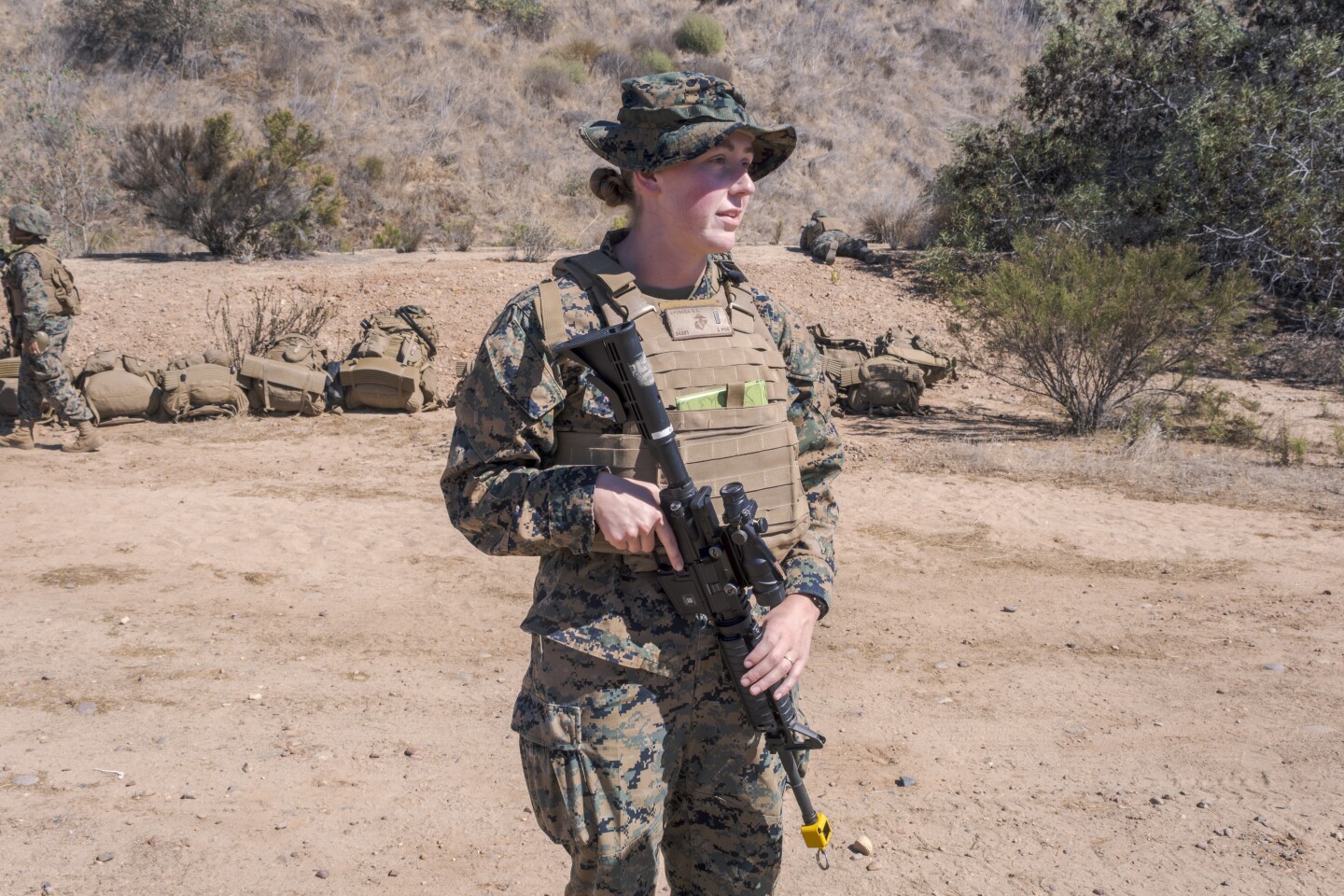
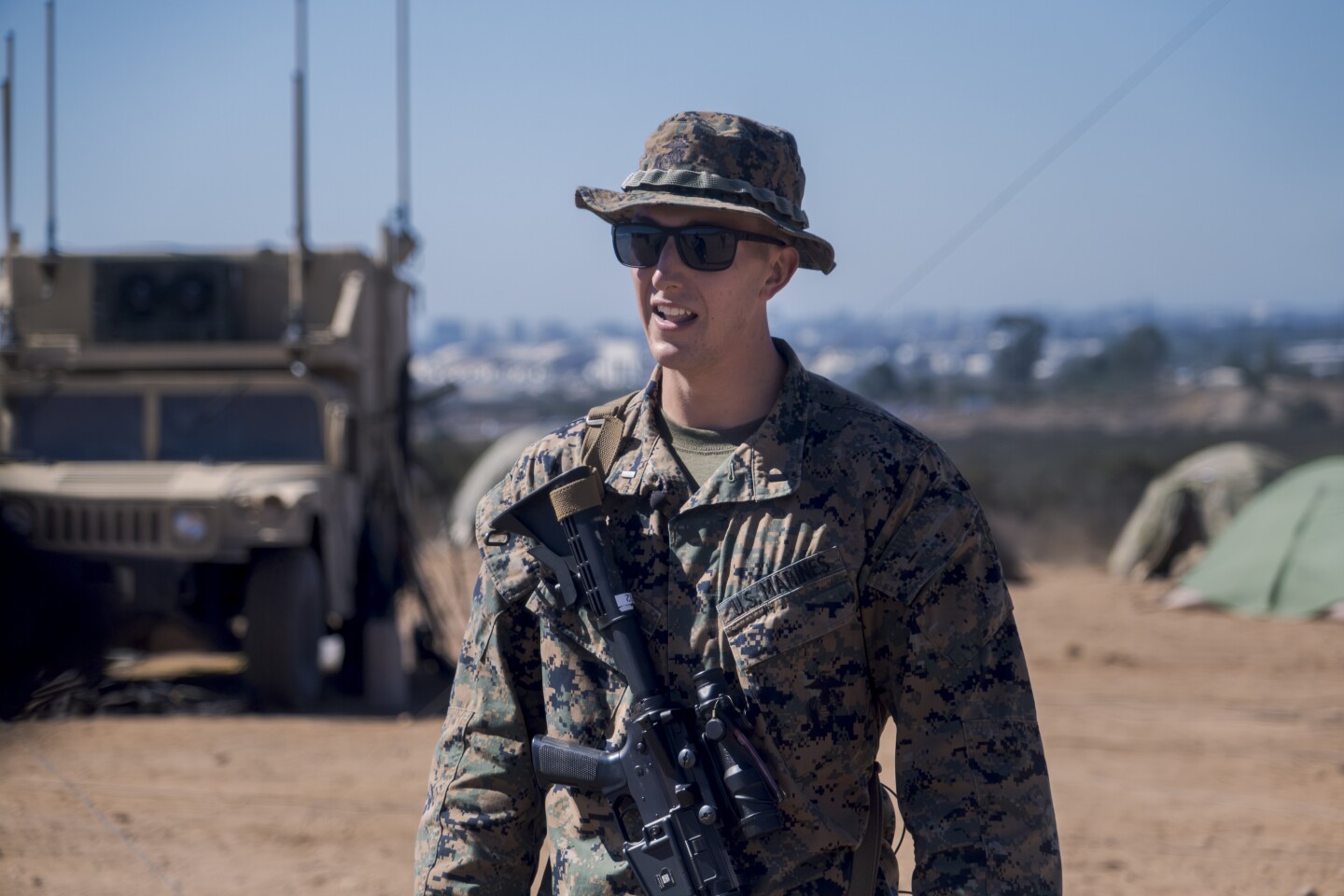
"Just picture yourself on a plot of land where there is no infrastructure available — no phone, no cell coverage, no internet — and our Marines here at Comm. Squadron have the equipment and the knowledge to be able to set that up for other Marines to do their jobs," Johnson said.
Over the course of the exercise the squadron established more than a dozen of these nodes both across Miramar and at Camp Pendleton.
From another node just east of the base camp, 1st Lt. Chandler Bienek watched his Marines deploy antennas for another node. With the freeway at his back, Bienek said it was a little unusual to do field work so close to a metro area.
"It's weird being here and being able to see civilians right behind us," Bienek said. "But as Marines, you know, we live in the field. (From our main site here, you can see the freeway, but in a few days, we're going to be pushing our sites further east."
U.S. military ground forces most often train in rural areas — their roles in potential conflicts demands it. There aren't many large Army installations in major metro areas, and even Camp Pendleton — sandwiched between San Diego and greater Los Angeles — is large and remote.
Bienek said the western part of the base is too developed to be of much use for ground operations.
"Over here though, we can set up anything," he said. "We have ranges over here (and) we're conducting exercises using blanks. This is just a great overall terrain to just train in and do Marine things."
Over 10 days the squadron established 15 nodes across the two bases and passed their assessment.
